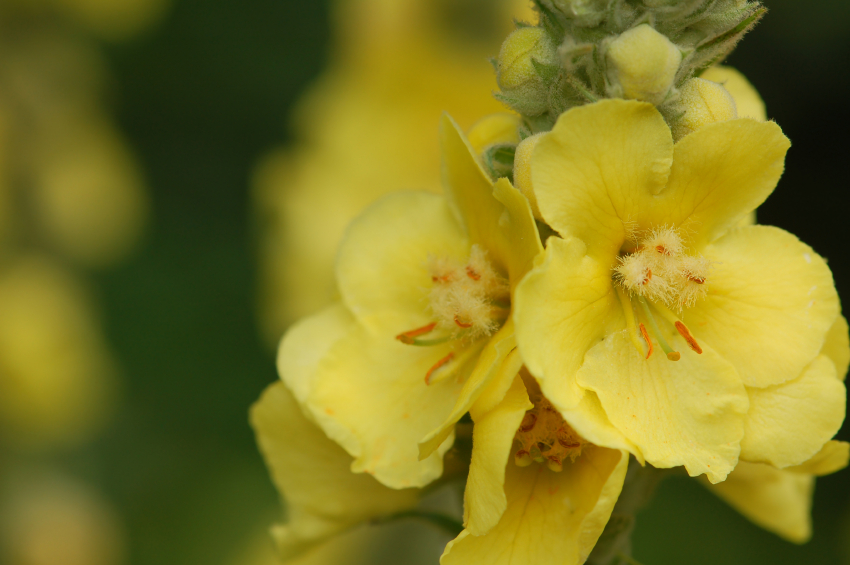More than prepper toilet paper: Here are even more uses for common mullein
09/04/2019 / By Zoey Sky

Common mullein (Verbascum thapsus) is often used as a natural substitute for toilet paper. But did you know this useful plant can be used for so much more? (h/t to BioPrepper.com)
The common mullein
In the western U.S., common mullein is known as the “cowboy toilet paper.” Take note that when using this plant as a substitute for toilet paper, you should wipe following the flow of the hairs on the leaves, not against.
First-year plants form a rosette with large, hairy, and velvety leaves. Common mullein’s silver-green foliage gives it an artificial waxed appearance. The plant grows in well-drained disturbed soil near abandoned fields, gravel, roadways, and waste places in rocky soil under full sun. Common mullein in their second year of growth can reach at least 10 feet in height.
The medicinal properties of common mullein
The leaves, stalk, and roots of common mullein have medicinal purposes.
- Analgesic – This means mullein can be used for pain relief.
- Anticatarrhal – Mullein helps minimize inflammation of the mucous membranes (e.g., lungs, sinus, etc.). (Related: Mullein: This versatile herbal remedy has many amazing health benefits, from reducing swelling to treating inflammatory diseases.)
- Antispasmodic – Mullein suppresses involuntary muscle spasms.
- Antitussive – Mullein helps relieve or prevent coughs. To make mullein cough syrup, layer mullein flowers and equal amounts of sugar in sterilized jars. Repeat layers until the jar is full, then set it on a windowsill for a week. Refill with flowers and sugar as the mixture melts and settles. Let the syrup sit for at least four weeks or longer, then strain into a dark jar for storage. Use the mullein cough syrup as needed.
- Astringent – Mullein helps body tissue (e.g., skin) contract.
- Demulcent – Mullein helps form a soothing film over mucous membranes.
- Diuretic – The ingestion of mullein can increase urine production.
- Expectorant – Mullein helps clear mucus from the airways, bronchi, lungs, and trachea.
- Mucilant – Mullein coats and protects mucous membranes.
- Vulnerary – Mullein promotes the healing of abrasions, cuts, and wounds.
The medicinal uses of common mullein
Mullein tea is an expectorant that promotes better lung function and removes congestion and mucus from the respiratory tract. Alternatively, you can use dried leaves via smoke inhalation. Use a dehydrator to speed up the drying process. Set the dehydrator on its lowest heat and process until dry.

You can make an oil infusion that can relieve earaches using common mullein flowers.
Recipe for mullein-flower oil infusion
Ingredients:
- Common mullein flowers (enough to fill a small jar about three-quarters full)
- Olive oil
Instructions:
- Find a group of blooming mullein plants from June to September, then gather the yellow flowers. Let the flowers dry for an hour or so to remove some of the water content.
- Fill the jar with olive oil or any other oil of your choice, then close the jar.
- Steep the infusion in a warm, sunny spot for at least two to four weeks. Shake the infusion at least once a day.
- Pour the infused oil through a strainer or a cheesecloth into another container for storage. Label, date, and store the container in a cool dark cabinet.
- Use the mullein infusion to relieve earaches or wax build-up. Put two to three drops into the affected ear several times daily until the pain goes away.
The mullein infusion can also minimize swelling in glands. Use it in a compress to relieve swollen areas on your body. It can also be used to ease laryngitis and tonsillitis. Additionally, mullein root can help strengthen the bladder.
Survival uses of common mullein
When gardening, you can use mullein to fix nitrogen levels and address poor soil conditions. The plant can also feed bees and other pollinators.
Use mullein as compost material, or let certain types of birds feed on mullein seeds. If you want to keep goats out of your property, plant mullein in your garden as a natural goat repellent.
Listed below are the miscellaneous survival uses of common mullein.
- Use mullein leaves to cushion shoes and provide warmth in cold weather.
- Mullein leaves can also be used to insulate an emergency blanket.
- When fishing, the saponins in mullein seeds can be used to stun fish.
- Dried mullein leaves and seed pods can be used as makeshift tinder for firestarting.
- Dip a dried mullein seed head stalk in beeswax, pine sap, or tallow to make a long-burning torch.
- Mullein stalks can be used to create a friction fire, either bow or hand drill style.
When SHTF, you can use common mullein as a natural remedy for various health complaints like coughs, earaches, or inflammation.
Sources include:
Submit a correction >>
Tagged Under:
anti-inflammatory, botanicals, herbal medicine, Herbs, home gardening, how-to, inflammation, ingredients, medicinal plant, mullein, natural cures, off grid, outdoors, preparedness, prepper, prepping, prevention, remedies, research, survival, survival medicine, Survival Tips, Verbascum thapsus, wilderness survival
This article may contain statements that reflect the opinion of the author





















